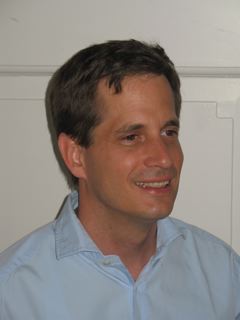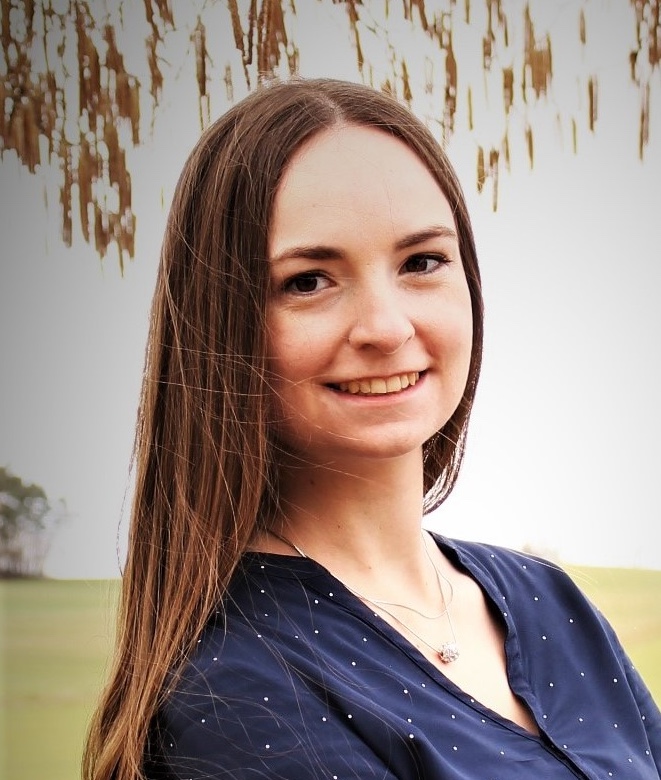The Theory of Causal Fermion Systems
Frequently Asked Questions
We hope that we cover your questions. In case you have more questions, we will be happy to answer! Don’t hesitate to contact us at mail@causal-fermion-system.com.
General Questions
The starting point for modelling a realistic physical system is to prescribe the causal fermion system which describes the vacuum. Once this has been done, one gets other physical spacetimes by perturbing the vacuum (by introducing particles and fields) while preserving the EL equations (→ the continuum limit). Moreover, one can model curved spacetimes by demanding that they “look locally” like the vacuum (→ connection to General Relativity). When considering such perturbations, the causal action principle determines the interaction and the dynamics of the interacting system.
Clearly, the causal fermion system describing the vacuum must be a minimizer of the causal action. It can be built up of Dirac sea configurations. Here the input is the configuration of the elementary particles (quarks, charged leptons and neutrinos) of the Standard Model. Free parameters are the fermionic masses. The output is the form of the interaction, including the gauge groups and the coupling of the gauge fields to the fermions.
Causal fermion systems are an approach to fundamental physics. The ultimate goal is to obtain a unified description of matter and all forces of nature. Moreover, the approach aims at understanding the quantum nature of gravity.
The Theory of Causal Fermion Systems has many connections and relations to other approaches to fundamental physics. For more details see
→ Relation to other theories
In a causal fermion system, there is a notion of a spacetime point. Spacetime is made up of all spacetime points. A spacetime point has the structure of being a linear operator on a Hilbert space. This operator encodes information on the behavior of particles and fields at the corresponding spacetime point. Moreover, products of spacetime point operators encode relations between the spacetime point, which give rise to the causal structure, topology and the geometry of spacetime.
→ Causal structure
→ Inherent structures
→ Geometric structures
Yes, definitely! There are many open problems both in math and physics. You find a collection of open problems on our research pages. If you have any ideas or suggestions, please let us know!
The page you are on is already a quite good start. For a first impression, it might be a good idea to simply surf through our pages. The big drop-down-menu might serve as an orientation.
For a more systematic study, you may find our online course helpful (it includes many videos and exercises). Moreover, you find links to articles, books and videos on our learning page.
The starting point is the solution space of the Dirac equation in the physical spacetime. Choosing the subspace of all occupied states, one obtains the Hilbert space $\H$ of the corresponding causal fermion system as well as the set of operators ${\mathcal{F}}$. The next essential ingredient is the regularization operator $R_\varepsilon$ which enables us to evaluate the solutions of the Dirac equation pointwise by mapping them to continuous functions (the regularization parameter $\varepsilon$ shall stay fixed for this brief introduction). $R_\varepsilon$ then defines a bilinear form on $\H$ by
\[ b_x(u,v):= -\overline{R_\varepsilon(u)(x)}R_\varepsilon(v)(x) . \]
Applying the Fréchet-Riesz theorem (with respect to the scalar product on $\H$), we may represent $b_x$ as a linear operator $F_\varepsilon(x)$. This operator is then contained in $\F$ of the abstract causal fermion system.
It also gives a measure on the abstract causal fermion system by the push-forward of the volume measure of the physical spacetime under $F_\varepsilon$. Then the support of this measure – i.e. the abstract spacetime – corresponds to the physical space time we started from. For details and further reading see [cfs16, p.22-27].
→ Minkowski space as a causal fermion system
This is due to the two fundamental ingredients of the theory: First, there is a notion of causality which also plays an important role in the causal action principle. Another essential ingredient for the theory are fermionic wave functions. Bosons come into play at a later stage in order to describe the collective behavior of fermionic wave functions.
→ Spin spaces and physical wave functions
→ The continuum limit
Physics Questions
In order to describe the Standard Model, one must choose a causal fermion system which describes the configuration of the fermions of the standard model. Here the input are the isospin, the colour index, three generations and the fact that the neutrinos break the chiral symmetry. The resulting causal fermion system has spin dimension 16. Analyzing the EL equations of the causal action principle in the so-called continuum limit, one gets the gauge groups of the standard model as well as the corresponding field equations, on the level of second-quantized Dirac fields coupled to classical gauge fields. The details are worked out in the monograph [cfs16]. More recently, the connection to second quantized bosonic fields has been made.
→ The continuum limit
→ Connection to quantum field theory
It is the general concept that the dynamics of a causal fermion system as described by the causal action principle describes an interaction of fully quantized fields. As recent steps towards making this concept precise, in [FK18] and [FK21] it was shown how an interacting causal fermion system can be described in terms of Fock spaces. Moreover, a quantum state was constructed, and it was shown that causal fermion systems allow for the description of general entangled states. The remaining step is to describe the dynamics of the quantum states in terms of a unitary time evolution on Fock spaces.
For clarity, one should note that quantum field theory is obtained only in a specific limiting case. The dynamics of the causal action principle goes beyond quantum field theory in that it involves nonlinear corrections which override the superposition principle. The connection to collapse phenomena in quantum theory is presently under investigation.
In the continuum limit, one also gets the equations of linearized gravity. Taking into account that the setting of causal fermion systems is fully covariant and respects the equivalence principle, these linearized equations are the Einstein equations up to possibly higher order corrections in the curvature tensor.
→ Connection to General Relativity
→ Underlying physical principles
The theory of causal fermion systems aims at making physical predictions. The path from first principles to predictions is long and takes time to develop. Nevertheless, there are first steps towards physical predictions.
→ Phenomenology
It is the general concept that the dynamics of a causal fermion system as described by the causal action principle describes an interaction of fully quantized fields. This also includes that gravity is quantized. At least in principle, the recent construction of a quantum state in [FK18], [FK21] and [FKR22] applies to the gravitational field as well. Moreover, in [lqg11] the notions of a general “quantum geometry” were developed. Whether and in which sense these methods and notions will give rise to “quantum gravity” still needs to be explored.
→ Connection to quantum field theory
→ Geometric structures
It depends. In order to answer the question, we first have to clarify what a theory of quantum gravity should provide. If the requirements are that one has to get a quantized force transmitter, a graviton and a quantum state of particles which can emit and absorb a graviton, then we have to say that, at present, this is not the case. One might be able to define such things, but this has not been worked out yet.
If, on the other hand, one requires a quantum description of spacetime, which is dynamical and in a certain limit behaves as the classical spacetime manifold described by Einsteins general relativity, then the answer is yes. In the theory of causal fermion systems, the geometrical structures are given by the collective behavior of the Dirac sea. On this Hilbert space one has operators, which correspond to spacetime points. These operators define a causal structure and describe how the Dirac sea evolves. In particular, one can derive the Einstein field equation from this description.
→ Connection to quantum field theory
→ Comments on quantum gravity wishlists
A universal measure $\rho$ which describes a physical system should be a minimizer of the causal action principle. The corresponding Euler-Lagrange equations describe the dynamics of the system.
The causal action principle admits many minimizers. This corresponds to the fact that there are many physical systems which satisfy the physical equations. In particular, one can use initial conditions to single out a specific minimizer.
In principle yes. If one chooses another measure describing the vacuum, the resulting interactions (gauge groups, couplings, etc.) will in general be different. However, this procedure is quite restrictive, because the vacuum measure must be a minimizer of the causal action principle. Moreover, the vacuum measure determines the interactions completely. It has not yet been studied systematically, which gauge groups can be realized by causal fermion systems.
In principle yes. Indeed, given any spacetime dimension $n$, one can construct a causal fermion system describing the corresonding Dirac vacuum. The tricky part, however, is to arrange that the resulting measure is also a minimizer of the causal action principle. So far, minimizers have been constructed only in the four-dimensional case. Another method for getting lower-dimensional systems is by symmetry reduction (similar as already done in the case of static causal fermion systems and homogeneous causal fermion sytems).
Mathematics Questions
A-priori, the Hilbert space is abstract. However, in applications the Hilbert space may be thought of as space of solutions of the Dirac equation. For example, in Minkowski space the physical wave functions representing the Hilbert space are given precisely given by the Dirac sea.
→ Minkowski space as a causal fermion system
The word causal in causal fermion systems is due to the fact that the set $\mathcal{F}$ is endowed with a certain causal structure. This is at the core of the causal fermion systems framework, as we now briefly discuss.
Recall that, in the context of causal fermion systems, a spacetime $M$ is the support of the universal measure $\rho$, so its points are bounded symmetric operators of finite rank. In order to define causal relations between arbitrary points $x,y \in M$, the product operator $xy$ plays a central role. In particular, the causal structure on $M$ depends on the eigenvalues of the product operator. Two points $x,y \in M$ are called timelike separated if all the eigenvalues are real and do not have the same the absolute value. They are called spacelike separated if all the eigenvalues have the same absolute value. Finally, if none of the previous conditions is satisfied, they are called lightlike separated.
There are a number of important comments to be made on this causal structure. First of all, it can be proven that the previously defined causal relations agree with the usual causal relations in Lorentzian Geometry in suitable limiting cases. Secondly, spacelike separated points do not contribute to the Lagrangian (and, hence, do not play a role when deriving physical equations from the causal action principle). This is analogous to General Relativity, where spacelike separated points cannot influence each other. Finally, an ordering of timelike separated points can be introduced and allows to distinguish a direction of time on $M$. However, in stark contrast with globally hyperbolic Lorentzian Geometry (considering the analogous ordering “$\ll$” relation), this ordering of timelike separated points is not necessarily transitive.
→ Basic definitions
→ Causal cone structures
Space of symmetric operators
The object $\F \subset \text{L}(\H)$ is the “embedding space” for the spacetime in a causal fermion system. It consists of all symmetric operators on $\H$ of finite rank and at most $n$ positive and $n$ negative eigenvalues (counting multiplicities).
The motivation is that those operators are used in the causal Lagrangian which then determine the universal measure as a minimizer of the causal action principle.
Spacetime
Spacetime $M$ of a causal fermion system is defined as the support of the measure $\rho$ (i.e., intuitively speaking, all points where the measure is non-zero),
\[
M := \text{supp}(\rho) \subset \F
\]
This totally different concept is motivated by the causal action principle which is by itself motivated from the Lagrangian principle in physics.In other words, the minimizing operators define a subset which is the spacetime of the causal fermion system.
Points in spacetime
- Since $M \subset \F$ the spacetime points $x\in M$ in a causal fermion system are symmetric linear operators of finite rank on $\H$. In the example of a classical spacetime described by a Lorentzian manifold, the points of this manifold can be identified with spacetime points of the causal fermion system via the local correlation map
→ Basic definitions
→ Minkowski space as a causal fermion system
On a Lorentzian manifold ${\mathcal{M}}$, a spinorial wave function is a section in the spinor bundle $S{\mathcal{M}}$, an associated vector bundle $S$ with local trivialization $SM \approx M \times C^4$. In the setting of causal fermion systems, on the other hand, we define spinors as elements of the spin space $S_xM = x(\H)$. Similar to a section of a bundle, a wave function associates to each spacetime point $x \in M$ a vector $\psi(x)$ in the corresponding spin space. Every vector in the Hilbert space is represented by a wave function, the so-called physical wave function.
→ Spin spaces and physical wave functions
Bundle / topological structures
Since causal fermion sytems provide a framework for non-smooth geometries, one can ask how topological notions on a differentiable manifold generalize to causal fermion systems. Since $M$ is a topological space by definition (subset topology from the operator norm on $\F$) one can create the structure of a sheaf by attaching to each $x$ the corresponding spin space $S_x$. This makes it possible to describe the topology by sheaf cohomology.
Additionally, if one assumes that all space-time points are regular, this gives rise to a topological vector bundle.
Clifford algebra
- In the context of classical spin geometry one works with the Clifford algebra which is used to define the spin algebra, which then is used to define the spinor space as an associated vector bundle via Clifford multiplication. This notion is generalized in causal fermion systems via the so called Clifford subspace. It can be seen as a generalization of the space spanned by the usual Dirac matrices.
Spin connection
- It is possible to generalize the notion of a spin connection from a smooth spin manifold to one with lower regularity. Like in the classical
setting, a connection should relate two different spin spaces with each other. Doing so, one needs to define a closed chain
\[
A_{xy} : S_x \rightarrow S_x
\]
which then can be used to define a spin connection
\[
D_{x,y} : S_y \rightarrow S_x
\]
as a unitary mapping from one spin space to another, even in the absence of regularity.
Metric connection
In Lorentzian geometry, the metric connection is derived from the metric and vectors in the tangent space $TM$. But this requires the existence of such a metric with a regularity of at least $C^2$. Having defined the metric connection, one can subsequently introduce the spin connection on a spinor bundle.
In the setting of causal fermion systems, one proceeds vice versa, without the need of a metric or any regularity. This can be done by defining splice maps $U_z^{(y|x)}$ relating two different Clifford subspaces at the same spacetime point $z$ and combing it with the spin connection. In the end, one obtains an isometry which we call the metric connection
\[
\nabla_{x,y} : T_y \rightarrow T_x .
\]
Curvature
- Having a spin or metric connection in a causal fermion system, one can define the curvature as usual as the holomony of the corresponding conneection,
\[
\mathfrak{R}(x,y,z) : T_x \rightarrow T_x \:.
\]





